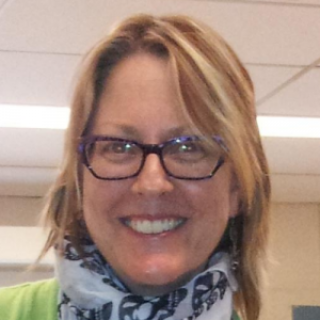
Giving Young Students a Bigger Slice of the Pie (Chart)
March 17, 2017
Ever ask a child what they did in school? Often the reply is “Nothing” or “I don’t remember.” Or, maybe, “Stuff.” You just can’t rely on young students to explain what they learned, how they learned it or if lessons are appropriate. So as scholars and policymakers, we have set out to answer the question of just how New Jersey’s young children do spend their days in school.
Since last fall, we have visited more than 90 classrooms across 20 districts in New Jersey ranging from 400 students to 35,000 students, in urban, suburban and rural communities, and have spent an average of more than four hours observing students in grades K-3.
We have used the EduSnap Classroom Observation tool (Ritchie, Weiser, Mason, & Holland, 2015) to quantify student experiences during the school day through carefully observing four randomly selected students in each classroom and systematically and frequently noting what these students are doing. We gain an overview of how students spend their time as we measure the time students spend in types of activity such as whole group, choice, and transitions, throughout the day.

In our sample, we found that almost all students in kindergarten through third grade spend most of their day–70 percent–in whole group instruction followed by individual work. Transitions from one activity to another–say, recess to classroom or classroom to lunch, children moving or waiting between locations or activity settings–absorbs another 15 percent of the day. That leaves 15 percent of the school day for activities such as small group instruction, collaborative group work among students, and student choice of learning activity–the activities research shows provide the deepest and richest learning opportunities. Less than an hour spent in activities that allow students to direct their learning, collaborate with peers, or be instructed in small group by the teacher is not enough. Recently, we asked more than 250 educators to draw a pie chart reflecting their ideal school day and not one teacher or administrator drew one that looked like the reality we have observed. Instead, educators across the state identified their ideal as a much more balanced use of time, and we are eager to help them find ways to slice those pie charts in new and better ways.
For example, transitions occur as a natural part of the class day, but each teacher would like them to absorb a much smaller portion of the day. Likewise, whole group instruction can be a useful teaching method, but it should not eclipse small group instruction with the teacher or group work when students work collaboratively on a task or toward a shared goal.
Increasing choice in a classroom from the trivial 3 percent–roughly 7 minutes–currently offered is a goal of each teacher and district that volunteered to work with us on improving quality for their youngest students. In an early education setting, choice means more than whether to use a red marker or a blue marker to write spelling words. Authentic choice means children select inquiry activities from a variety of unassigned options, engaging in self-directed learning with access to a variety of materials and resources–including the teacher–to guide their learning. Such choice enables students to take initiative, problem solve, and persist on tasks. In fact, these are the skills that children will rely on to be successful for their entire school experience and beyond as detailed in the “Career Ready Practices.”
Teachers and administrators want to make these changes. Yet, to change teaching practices and shift this pie chart, a systems approach is necessary as time use does not rest solely on the shoulders of teachers. Rather, policies (schedules, curricula, etc.) drive how time is spent in the classroom. The NJ Implementation Guidelines for kindergarten and for first through third grade provide a useful framework for participating districts to make the changes needed as we work directly with teachers and district leadership to meet these guidelines and enhance the quality of K-3 education for our students.
NIEER’s Professional Learning Community Guide provides a framework to explore the Guidelines, reflect on current practices, and engage in extensive discussions with colleagues.
We all believe a more balanced pie chart will provide better opportunities for young students to engage in curriculum in more meaningful ways and will enable schools to comply with new state standards. Changing practice, while challenging, will help avert many classroom management struggles, increase student internal motivation, and tap into key approaches to learning skills such as engagement, persistence, problem solving, initiative and creativity. After all, policymakers, teachers, principals, superintendents–and parents–want children who both read and enjoy computer time, who problem-solve and persist, who take initiative and propose creative solutions.
And while children still may not respond in detail when we ask what they did at school, we can feel confident their time was well spent because of these efforts.
Shannon Riley-Ayers, Associate Research Professor at NIEER, led the writing and implementation of the New Jersey First through Third Grade Implementation Guidelines. Sharon Ryan is Senior Research Fellow and NIEER and Director of Qualitative Studies at the Center for Early Education Research (CEER) at Rutgers University. Alexandra Figueras-Daniel, an Assistant Research Professor at NIEER, has contributed extensively to NIEER’s research on DLLs and classroom quality. Vincent J. Costanza, Ed.D. is executive director of the Race to the Top–Early Learning Challenge & Co-Administrator, Division of Early Childhood Education and Family Engagement in the New Jersey Department of Education.
The Authors
Dr. Figueras-Daniel was awarded a Young Scholars Program grant from the Foundation for Child Development to investigate coaching and professional development of Latina preschool teachers working with DLLs. At NIEER, she leads this study as well a project to develop a Latina leadership pipeline in ECE.
About NIEER
The National Institute for Early Education Research (NIEER) at the Graduate School of Education, Rutgers University, New Brunswick, NJ, conducts and disseminates independent research and analysis to inform early childhood education policy.


